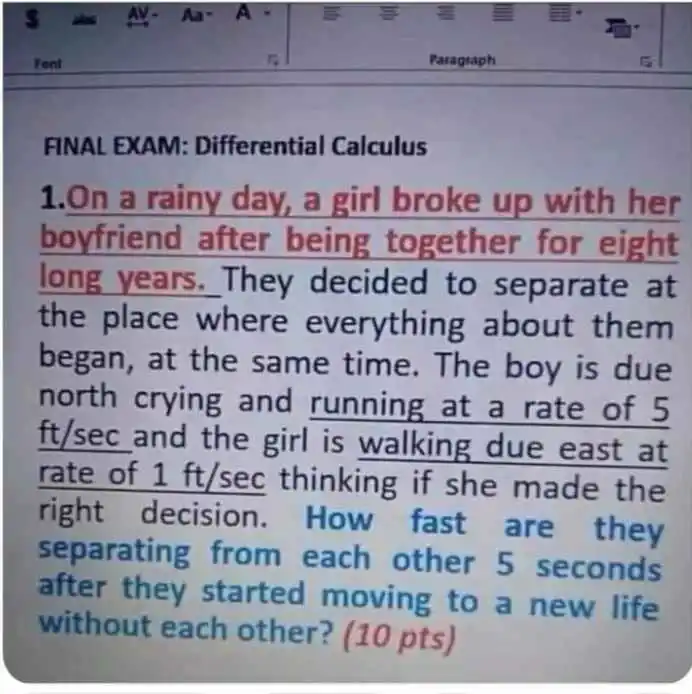Physics rule
Physics rule


Physics rule


You're viewing a single thread.
It's been a while, but I think it's quite trivial.
After one second, they span a right angled triangle, therefore (using a² + b² = c²) their distance is √(5²+1²) = ~5.1 ft
They move at constant speed, therefore they seperate at 5.1 ft/s. That means at 5s it's just 5.1 × 5 = 25.5 ft for the distance and their speed is still the same.
They each move at a constant speed, but the distance between them doesn't increase at a constant pace. See my other comment.
Edit: I am dumb, and looked at the wrong number.
I'm trying to apply the most simple math possible and it seems to add up.
After one second, their distance is √(5² + 1²) = ~5.1 ft
After two seconds, their distance is √(10² + 2²) = ~10.2 ft
After three seconds, it's √(15² + 3²) = ~15.3 ft
As speed is the rate of change of distance over time, you can see it's a constant 5.1 ft/s. You're free to point out any error, but I don't think you need anything more than Pythagoras' theorem.
The question specifically asks for their seperation speed at 5s to ignore any initial change in their speed as they first need to accelerate, I'd assume.
Ah sorry, I'm tired and made a mistake. I quickly made a spreadsheet (because keeping track of numbers is hard), and I was looking at the wrong column in the sheet. My bad!
You were tired so you made a spreadsheet to calculate the differential equation quiz from a meme?
Yes, compared to doing the calculations in my head lol
I work in mysterious ways
I don't see why the distance between them isn't growing at a constant speed.
At any given time t seconds after separation, the boy is 5t north, and the girl is 1t east. The distance between them is defined by the square root of ((5t)2 + (t)2 ), or about 5.099t.
In other words, the distance between them is simply a function defined as 5.099t, whose first derivative with respect to time is just 5.099.